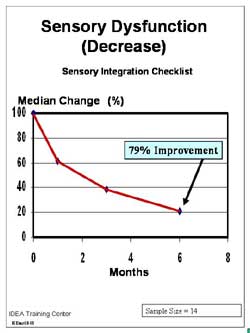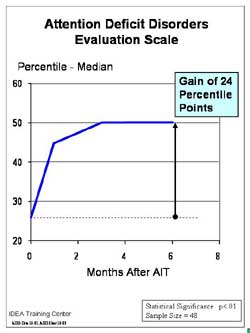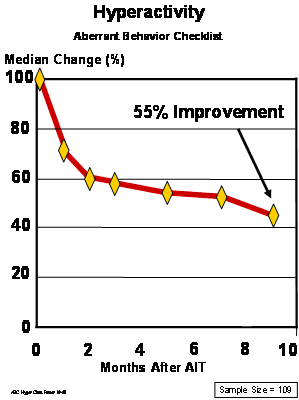Berard Auditory Integration Training: Behavior Changes Related to Sensory Modulation
Research results on changes in behaviors and sensory modulation after the 10 day Berard AIT program has been published in the peer-reviewed journal, Autism Insights. This is an open-access, online journal so the article is easily available to readers around the world. There is no fee to read the article.
Just click this link:
Berard Auditory Integration Training: Behavior Changes Related to Sensory Modulation
Berard AIT Produces Documented Results
Berard AIT creates improvements in a variety of skills and abilities. This is reflected in numerous studies and through clinical observations with our own clients.
The following data is based on proper use of the Berard method with Berard approved devices (either the Audiokinetron or the Earducator 6/F™.) These results can not be generalized to other types of sound-based interventions using different equipment, methods or music sources.
 Sensory Integration
Sensory Integration
In 2001, Sally Brockett conducted a pilot study at IDEA Training Center with a group of 14 children with varied diagnoses, but all with identified sensory integration difficulties, to see if the anecdotal reports of sensory improvements could be quantified.
The children participated in a standard program of AIT. Parents completed a sensory checklist prior to AIT, and then at 1 month, 3 months and 6 months post-AIT.
The checklist contained items typically seen on sensory integration checklists and included areas such as vestibular hypersensitivity, vestibular hyposensitivity, tactile discrimination, self-regulation, play interactions etc.
The data on the adjacent chart indicates the changes that were measured through the 6 months period of monitoring progress.
 Attention Deficit
Attention Deficit
The Attention Deficit Disorders Evaluation Scale was used to monitor progress with children who participated in AIT.
The adjacent chart depicts the average baseline percentile of this group prior to AIT.
Rapid improvement was seen in the first three months, with the median percentile reaching the 50th percentile, a gain of 24 percentile points.
Half of the children achieved greater gains than this, and half of them did not achieve this much.
 Hyperactivity
Hyperactivity
Data was collected on hyperactivity using the Aberrant Behavior Checklist to obtain a baseline and to monitor changes across time.
This chart shows a rapid improvement (decrease in hyperactivity) one month after AIT and shows progressive improvement through nine months post-AIT.
Half of the individuals showed even more improvement, including some in which hyperactivity was eliminated.





